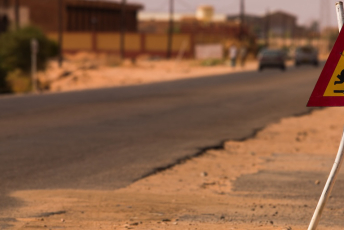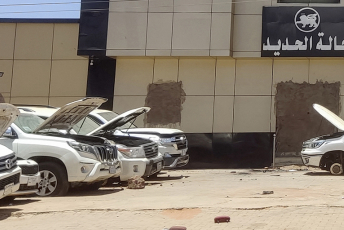Mali is a country rich in heritage and cultural artefacts. Terracotta and bronze figurines, ancient beads, medieval manuscripts and other archaeological objects from Djenné, Mopti and surrounding areas in Central Mali tell of this rich history. Tragically the illegal trade in artefacts is rife, with archaeologists estimating that 90% of sites in Mali have been looted.
‘The subjective value of art makes it difficult to say how much it is all worth,’ says Julia Stanyard, an analyst at the Global Initiative Against Transnational Organized Crime.
In July 2020, the United Nations Educational, Scientific and Cultural Organization (UNESCO) warned art lovers in market countries of a false certification scam involving the illegal trade in African antiquities. The million-euro scam involves the sale of artefacts – including Mali’s Djenné terracotta’s – with false certificates that appear to be authorised by UNESCO.
This scam indicates an organised form of looting and trading in cultural property but, despite the steady and catastrophic loss for the collective cultural heritage of the Malian people, little information exists on this illegal trade.
This illegal trade occurs in the context of severe insecurity in the region, and in Mali itself. Since the outbreak of conflict in Mali in 2012, smuggling routes favour its ungoverned spaces, with goods – including plundered cultural artefacts – transiting through Morocco and Algeria into Europe and beyond.
It appears that, in this conflict, there is growing collaboration between organised criminal groups and violent extremist groups. Both take advantage of each other’s tactics and operations, as well as the conflict, increasing insecurity and opportunity for criminal activity in the region.
Investigating this pervasive theft is complex. Each type of artefact has a different trafficking route and intended market, requiring a different strategy to identify the perpetrator and address the criminal value chain involved in the smuggling and trading of that artefact. The National Museum of Mali, the Diréction Nationale du Patrimoine Culturel (National Directorate of Cultural Heritage) and law enforcement agencies are best placed to do this.
Both the Directorate and law enforcement agencies are legally mandated to manage and protect archaeological sites, but insecurity and constrained capacity seem to have crippled their work. It’s almost impossible for officials to access sites, and a lack of financing to raise awareness in local communities compromises their protective mandates.
Capacity building and training of law enforcement agencies provided by development partners, including the World Customs Organization and UNESCO, have partly helped address the problem. Informal networks of cultural authorities have also been established in West Africa to help identify artefacts and distinguish genuine antiquities from trinkets in transit countries.
Increased prosecution should form an essential part of a wider, more comprehensive response. However, while any criminal justice system faced with Mali’s multi-layered complexities would struggle to effectively investigate and prosecute such cases, there has not been a single prosecution in Mali related to the illegal trade in cultural property. For actors involved in this illicit market, this means very low risk and very high rewards.
In addition, four main problems prevent Mali from addressing the illegal trade in cultural artefacts.
First, while Mali has incorporated the 1970 Convention on Illicit Trafficking into its laws, which nationalise excavated archaeological artefacts, prohibit excavations by private individuals and criminalise the theft or misappropriation of cultural property, offences in terms of these laws attract only administrative penalties. In a multimillion-euro industry, this provides little deterrent effect.
Second, there is little clarity on what actually qualifies as cultural heritage and artefacts. This applies not just to Mali but to the whole West African region. Relevant databases, such as INTERPOL’s Stolen Works of Art Database, help identify antiquities, but current databases of artefacts from West Africa are incomplete.
Comprehensive and accessible databases would allow the authorities, for instance, border security officials, to identify genuine artefacts. This is an essential first step to stemming the flow of stolen antiquities at national borders. Yet ensuring access to these databases and sharing live information across different agencies is challenging in the current context.
Third, the legislative framework in Mali is siloed. Organised crime, international crime, and counter-terrorism laws rarely speak to each other. As a result, the response from the agencies of the criminal justice system fail at the outset to draw linkages between actors and their modus operandi. Violent extremism and organised crime intersect in Mali, contributing to the destruction, looting and illegal trade in cultural artefacts.
The fourth challenge is Mali’s relatively weak judicial system. Generally, there are few effective investigations resulting in successful prosecutions for complex crimes. A key indicator of this is that Mali’s government referred its own situation to the International Criminal Court (ICC). This led to the conviction of Ahmad Al Faqi Al Mahdi for the war crime of the destruction of cultural and religious sites in Mali.
To stem the illicit trade in Mali’s cultural heritage, it is essential to address the problems mentioned above. It appears that there is an opportunity for this now, as current media attention on artefacts stolen from Mali’s raises awareness of the issue in destination countries and brings public pressure to bear. Sadly though, should this opportunity be lost, so too would be the remainder of Mali’s unique heritage - an irretrievable loss that may be impossible to restore.
Allan Ngari, ENACT Regional Organised Crime Observatory Coordinator for West Africa, ISS Dakar







